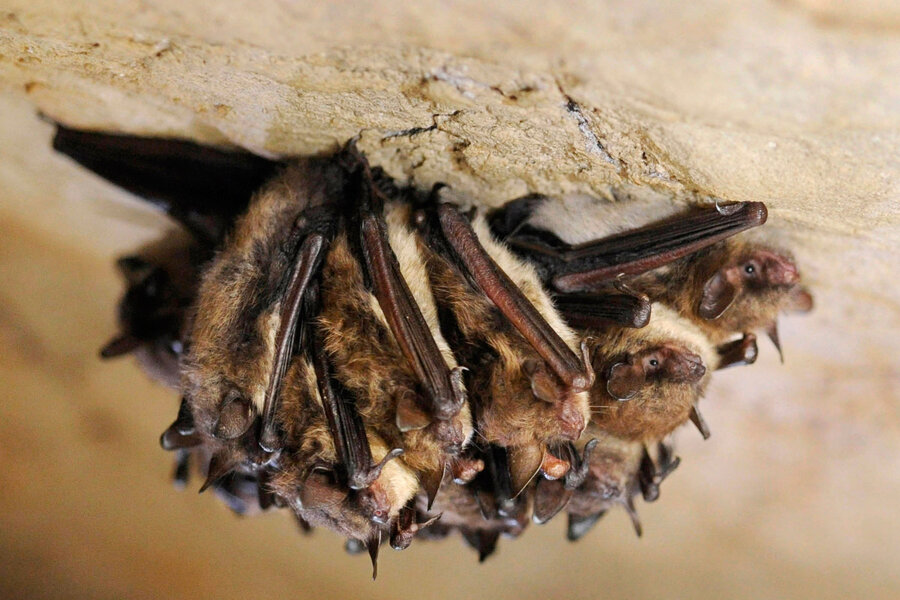White-nose syndrome moves to West Coast: How to save the bats?
Loading...
News that fungal disease known as white-nose syndrome that has devastated bat populations in the eastern United States has been spotted in Washington state has brought new urgency to the plight of the often under-appreciated pollinators.
An affected little brown bat was found in early March about 30 miles east of Seattle, in Washington state, according to a press release Thursday by the US Fish and Wildlife Service.
It represents an unwelcome development in the saga of this disease, which poses no known threat to anything other than bats, but has wildlife officials concerned for the health of a species that provides the United States with significant pollinator and insect control services.
“We are extremely concerned about the confirmation of WNS in Washington state, about 1,300 miles from the previous westernmost detection of the fungus that causes the disease,” said US Fish and Wildlife Service director Dan Ashe in the press release.
“Bats are a crucial part of our ecology and provide essential pest control for our farmers, foresters, and city residents, so it is important that we stay focused on stopping the spread of this fungus. People can help by following decontamination guidance to reduce the risk of accidentally transporting the fungus,” said Mr. Ashe.
So what efforts are being made to support the bats’ survival?
In Washington state, wildlife officials are already underway with surveys and bat sampling in the North Bend area – where the affected bat was found.
On a national level, the US Fish and Wildlife Service leads the effort, and while transmission appears to be primarily from bat to bat, the fungal spores can be carried on people’s clothing, shoes, or caving gear.
“This disease just made a jump of more than 1,000 miles, so it’s pretty reasonable to think this could be a human-caused transmission,” said Mollie Matteson, senior scientist with the Center for Biological Diversity.
“What’s absolutely heartbreaking about this news is that there were obvious things wildlife and land managers could have done to stem the spread, including prohibiting nonessential cave access into public land caves. They could have passed rules requiring that no caving gear or clothing from WNS-positive states be allowed in caves in unaffected states.”
Indeed, the Center for Biological Diversity filed a petition in 2010, seeking to close all caves and abandoned mines on federal land to all but essential human activity.
And such action has been taken by federal and state authorities in much of the east, in locations where bats are known to hibernate. Moreover, for those who do find themselves visiting caves, mines, or bat roosts, there is a decontamination protocol in place.
While many will want to do all they can to help bats struggle through this crisis for the animals’ sake alone, there are less altruistic reasons to be concerned, as well.
Of the more than 1,300 bat species worldwide, many consume enormous amounts of insects, including some of the most damaging agricultural pests. They pollinate plants and disperse seeds, enabling fruit production that can support local economies. They are, in many cases, “keystone species” – without the services they provide, entire ecosystems can collapse.
“Everyone from state and federal agencies to individual cavers need to redouble their commitment to decontamination, especially in the western states,” said Katie Gillies, Director of Imperiled Species for Bat Conservation International. “We need to focus on minimizing the spread of this fungus by following decontamination guidelines, increasing surveillance and ramping up our investment in potential treatments."






